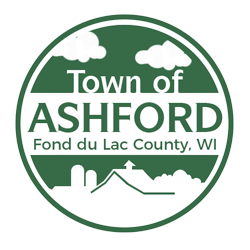Contact: Kyle Christianson or Dale J. Knapp 608.241.9789 or [email protected]
MADISON— Over 5.7 million acres, or 16.5% of the state’s total land area, was publicly owned conservation and recreation land in 2006, according to the Wisconsin Taxpayers Alliance (WISTAX). WISTAX, a nonprofit, nonpartisan organization dedicated to public policy research and education, based its findings on a county-by-county inventory of lands owned by federal, state, and county governments.
According to the new report, “Public Conservation Land in Wisconsin,” most such land was concentrated in northern Wisconsin. Of the 16 counties with at least 25% of their land owned publicly, 15 were in the northern half of the state. This reflects the large presence of national, state, and county forests in the region. Counties with the most public land were Bayfield (464,673 acres), Forest (399,113), and Sawyer (336,235).
Counties with the fewest acres were Menominee (0), Kewaunee (3,112), and Ozaukee (4,006), WISTAX said.
Counties owned the most public land, with 2.6 million acres, or about 1 million more than state government.
Land owned by the state is managed by two agencies, the Department of Natural Resources (DNR) and the Board of Commissioners of Public Lands (BCPL). The DNR manages 1.5 million acres, while BCPL oversees 76,220. The U.S. Forest Service also owns over 1.5 million acres, primarily in Chequamegon and Nicolet National Forests.
According to WISTAX, DNR and county public acreage statewide increased 15% (538,424 acres) from 1994 to 2006. On average, each county added nearly 7,500 acres of public land. Regionally, most of the land acquisition was in northern Wisconsin, as eight of the top 10 counties were in the north. The largest gains from 1994 to 2006 were in Oneida (68,204 acres), Iron (32,462), and Lincoln (32,242) counties.
The WISTAX report also studied the cost of public lands. During the 1950s and 1960s, DNR fee title costs were, on average, below $100 per acre. Land rose to over $300 in the 1970s and surpassed $600 in the 1980s. Costs continued to rise during the 1990s and 2000s, when purchases averaged $850 and $1,800 per acre, respectively. The sharp increase in price over the past three decades reflects rising land values and growing demand for conservation and recreational space. Although acquisition costs continue to rise, the consistency with which DNR prices follow trends in total statewide equalized values (an estimated measure of market value of land) suggests the agency, overall, pays near market value for its purchases. WISTAX also noted that DNR often purchases land with significant value in the open market, which can put upward pressure on prices.
The Wisconsin Taxpayers Alliance, founded in 1932, is the state’s oldest and most respected private government-research organization. Through its research, publications, civic lectures, and school talks, WISTAX aims to improve Wisconsin government through citizen education. Nonprofit, nonpartisan, and independently funded, WISTAX is not affiliated with any group—national, state, or local—and receives no government support. Wisconsin Taxpayers Alliance A common debate over public land is its impact on property taxes. According to WISTAX researchers, studies find that public lands have marginal effects on property taxes in Wisconsin. Payments in lieu of taxes from the federal and state government help replace lost tax revenue. In 2008, DNR payments in lieu of taxes totaled $9.4 million, or about $40 per acre. Additionally, most taxpayers do not realize that the state school aid formula compensates school districts when tax base is lost.
The WISTAX report also included a brief on private land forest programs. Over three million acres across the state are enrolled in the Managed Forest Law (MFL) or Forest Crop Law (FCL) programs. The programs provide special tax treatment for landowners who enroll their forest land and agree to manage the land according to a forest management plan. WISTAX said the programs provide clear benefits for the landowners, who pay less in property taxes, but the impact on local governments is less transparent. To the extent that local governments rely on property taxes to finance their spending, removing forest land from the tax rolls increases the tax burden on the remaining taxed properties.
A free copy of The Wisconsin Taxpayer titled “Public Conservation Land in Wisconsin” is available by contacting WISTAX at 401 North Lawn Avenue., Madison, WI 53704-5033; e-mailing [email protected]; visiting www.wistax.org; or phoning 608.241.9789. (An electronic version of this release is available at www.wistax.org)
